Bighorn Sheep
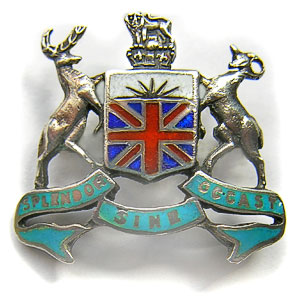 A tiny silver and porcelain pin of the proposed B.C. Arms from about 1900 shows a bighorn sheep supporter.
A tiny silver and porcelain pin of the proposed B.C. Arms from about 1900 shows a bighorn sheep supporter.
In the nineteenth century, bighorn sheep became sufficiently important as big game in British Columbia that in 1895 one was used as a supporter for the proposed provincial arms (right). And although the B.C. Arms are somewhat different today, the bighorn sheep remains.
Bighorn sheep are still plentiful in southern B.C. where they favour the dry valleys and mountains of the Okanagan, South Cariboo, South Chilcotin and East Kootenay regions as such conditions produce the grass and herbs upon which the animals feed. They are rarer in West Kootenay, as the Selkirk and Purcell ranges are heavily forested and much wetter and so do not offer the same grasslands. Although the sheep can not be seen from the Lake, itself, there is a small herd that is often seen along a road which joins two parts of the Lake.
Two roads link Nelson, at the west end of the West Arm, and Creston, at the south end of the Main Lake. The northern route stays low: it follows the Lake and crosses it on, what is billed as, the longest free ferry ride in the World.
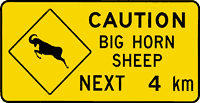 A roadside sign on the west side of Kootenay Pass.
A roadside sign on the west side of Kootenay Pass.
The southern route goes high: indeed Kootenay Pass is the highest paved road in British Columbia. It is on this high ground in the southern Selkirks that bighorn sheep are sometimes seen.
Numbering around two dozen, this herd has its origins in Waterton Lake National Park in Alberta. In 1972, sheep from there were transplanted to the Hall Mountain region of Washington State, just south of Kootenay Pass. From there, some of them spread north and back to Canada. Of the two subspecies of bighorn sheep in British Columbia, California and Rocky Mountain, the Kootenay Pass herd are the latter—as are the nearby Syringa Creek herd at the south end of the Arrow Lakes. The pictures, below, are from various herds but are all of the Rocky–Mountain subspecies. Extensive information about them is found in the BC Wildlife bulletin: Status of Rocky Mountain Bighorn Sheep in British Columbia.
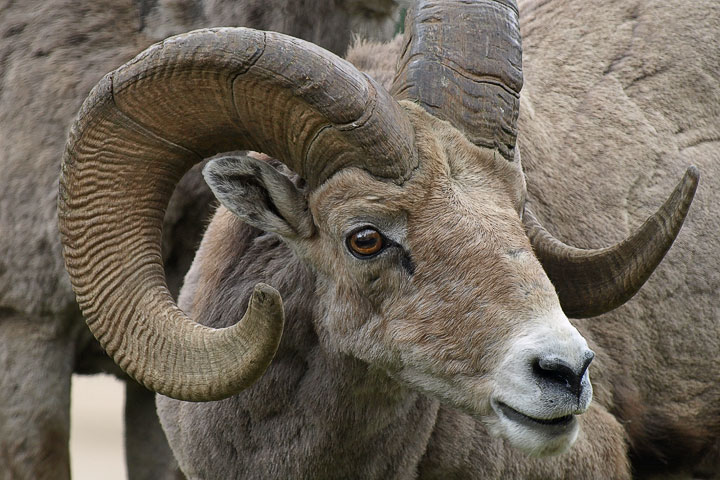 The Bighorn Sheep gains its name from the adult ram’s massive horns which curl back and down close to the head. The horns grow throughout the sheep’s life, but as growth declines in winter, markings appear which reveal the ram’s age.
The Bighorn Sheep gains its name from the adult ram’s massive horns which curl back and down close to the head. The horns grow throughout the sheep’s life, but as growth declines in winter, markings appear which reveal the ram’s age.  Doug Thorburn
Doug Thorburn
 Each young ram in the queue awaits its turn to move.
Each young ram in the queue awaits its turn to move.
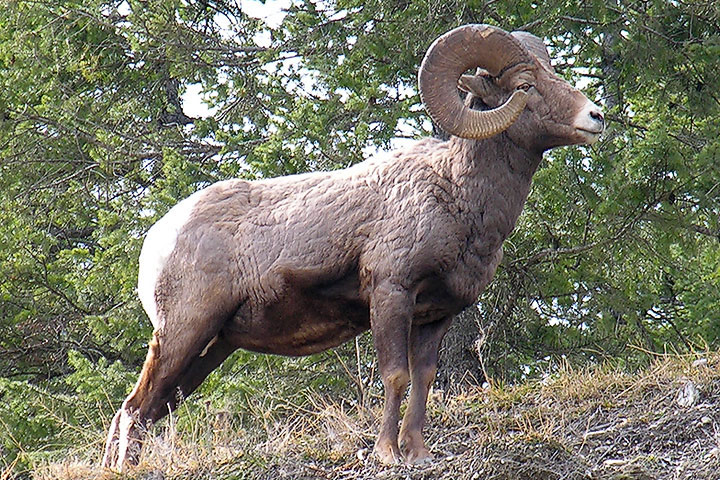 A bighorn ram.
A bighorn ram.
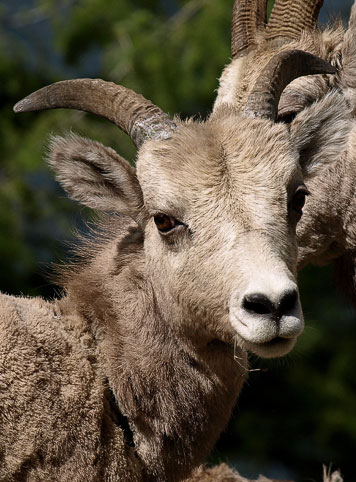 The bighorn ewe also has horns, but they are smaller than those of the ram.
The bighorn ewe also has horns, but they are smaller than those of the ram.  Doug Thorburn
Doug Thorburn
 A bighorn ewe.
A bighorn ewe.
 Bighorn sheep do not have the agility of mountain goats and move very cautiously across this steep bank.
Bighorn sheep do not have the agility of mountain goats and move very cautiously across this steep bank.
 Bighorn ewes foraging. Bighorn Sheep are suited to rugged, mostly treeless terrain, where they forage on low-growing grasses and herbs.
Bighorn ewes foraging. Bighorn Sheep are suited to rugged, mostly treeless terrain, where they forage on low-growing grasses and herbs.
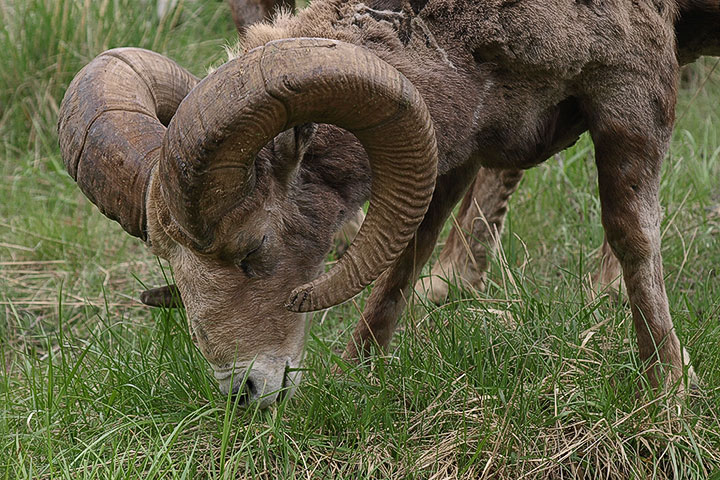 A bighhorn ram foraging.
A bighhorn ram foraging. Doug Thorburn
Doug Thorburn
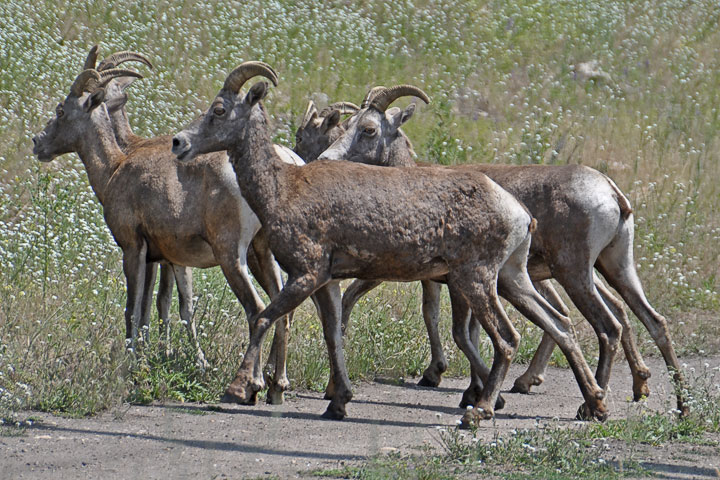 A group of female bighorn sheep head for a field of delectable flowers.
A group of female bighorn sheep head for a field of delectable flowers.
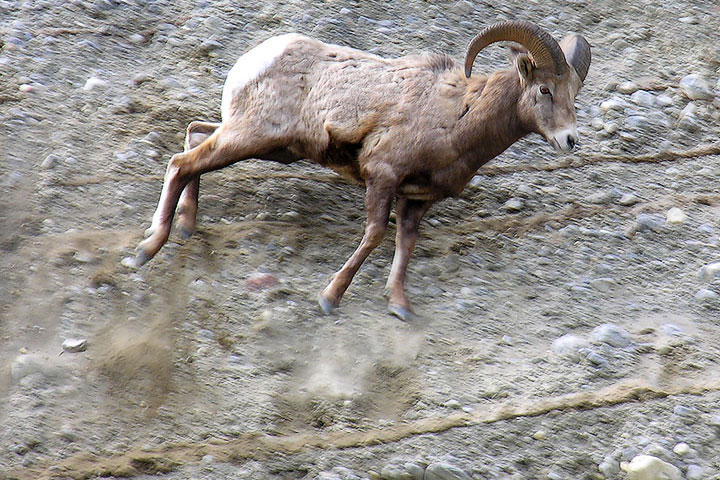 This young ram has just lost his footing. He then plummeted about 20 meters before regaining control near the base of the bank.
This young ram has just lost his footing. He then plummeted about 20 meters before regaining control near the base of the bank.
Information from BC Ministry of the Environment: Bighorn Sheep in BC.
![]()